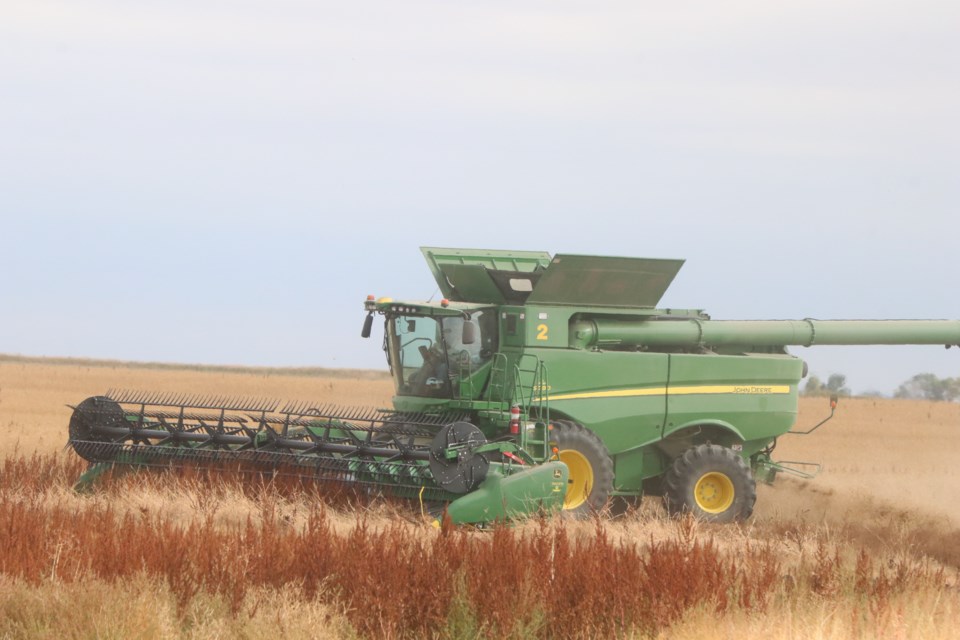THE BATTLEFORDS — The northwest region received the most precipitation this past week which means producers here experienced rain delays. Despite this, harvest is 85 per cent complete, which is ahead of the 76 per cent five-year average and 69 per cent 10-year average. Producers are hoping to wrap up harvest within the next week if good weather occurs.
Most spring-seeded cereal crops have been harvested, with only a few spring wheat, oats, and barley fields remaining. Barley harvest is 96 per cent complete, 94 per cent of spring wheat is in the bin and 84 per cent of oats are off. Harvest of canola and flax is nearly three-quarters complete as harvest progress is 74 per cent for canola and 71 per cent for flax.
The northwest received the most rainfall this past week, which caused producers in some areas to experience harvest delays. The Glaslyn area received 31 mm of rain, which was the most in the province. Meota area got 26 mm of rain, while the North Battleford area got 25 mm. The Turtleford area got 19 mm, while the Hafford and Paradise Hill areas got 15 mm of precipitation. Overall, topsoil moisture is similar to last week. Cropland topsoil moisture is 62 per cent adequate, 29 per cent short, and nine per cent very short. Hayland topsoil moisture is 54 per cent adequate, 30 per cent short and 16 per cent very short. Finally, pasture topsoil moisture is rated as 54 per cent adequate, 29 per cent short and 17 per cent very short.
Estimated yields for spring cereal crops are similar to the provincial averages. Estimated yield is 45 bushels per acre for hard red spring wheat, 66 bushels per acre for barley and 79 bushels per acre for oat crops. The average estimated canola yield for the northwest is 37 bushels per acre, which is the highest in the province. Finally, estimated field pea yield is 35 bushels per acre which is the same as the provincial average.
Hard red spring wheat grades for this region are below the provincial average. In the northwest, 42 per cent of hard red spring wheat is graded at 1CW, 46 per cent is 2CW, nine per cent is 3CW, and two per cent is CW feed grade.
Crop damage this past week was mainly caused by windy conditions, but there was some waterfowl and wildlife damage near Paradise Hill. Producers are hoping for dry conditions over the next week to wrap up harvest in good time and get equipment put away.
For more information about Northwestern Saskatchewan, explore the .
|
Northwest Saskatchewan |
|
|
Census Division |
Per cent Harvested |
|
16 |
85 |
|
17 |
86 |
|
Region Average |
85 |




